Term of the Month: The Wash Technique
Term of the Month: The Wash Technique
Term of the Month: The Wash Technique
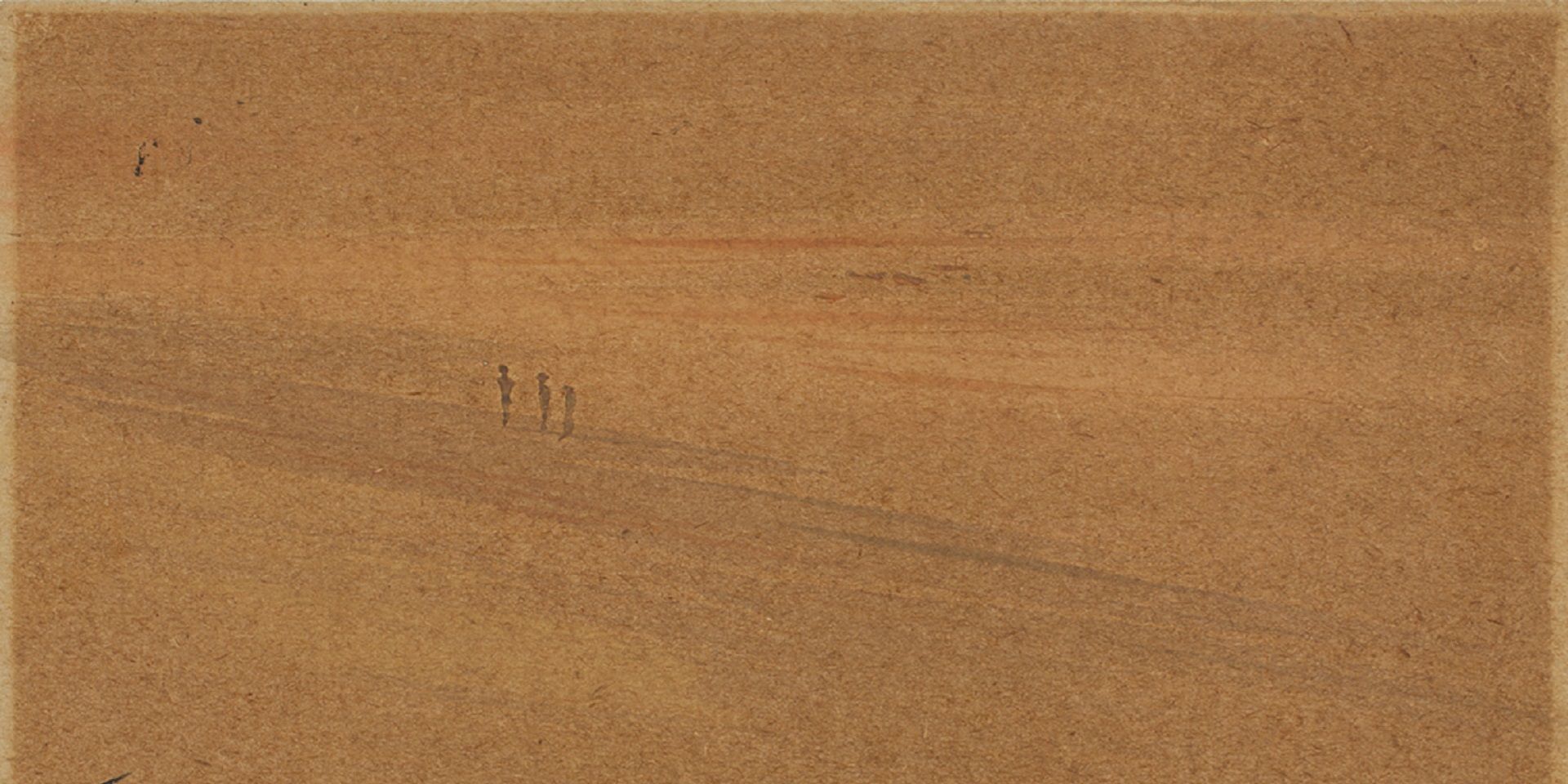
Nandalal Bose, Untitled (detail), Watercolor on postcard. Collection: DAG
In Vision & Creation, artist Nandalal Bose writes, ‘Master artist Abanindranath’s own process of painting with water colour is known as wash’. Thus, he begins his essay on wash painting by noting that Tagore’s painting style (and the Bengal School style at large) had become synonymous with the wash technique. This centuries old technique’s history gives us a glimpse into pan-Asian cultural relations, the politics and pedagogy of art, and the evolving ideas around national identity in early twentieth century India. We try to unpack some facets of its long, layered, and significant trajectory in the art histories of the continent in our recurring series, Argot, where we seek to demystify some of the major ideas from the world of art.
The wash technique, typically, refers to the process where a wet brush soaked in a solvent such as water is used to apply ink or other pigment to a wet or dry surface such as paper or canvas, resulting in translucent layers of colour. Nandalal goes onto describe the process where a drawing with pencil or charcoal is made on paper, silk or cotton cloth, and then on the dampened surface a wash of colour is applied. To fix the colour, once it dries, it is ‘washed’ or soaked in water and dried again. From the start to finish, the process never involves a completely dry surface. Once the initial sketch has been filled with colour, to fix the colours or to soften them, one or several layers of transparent washes are applied. The process is then repeated until the painting is finished.
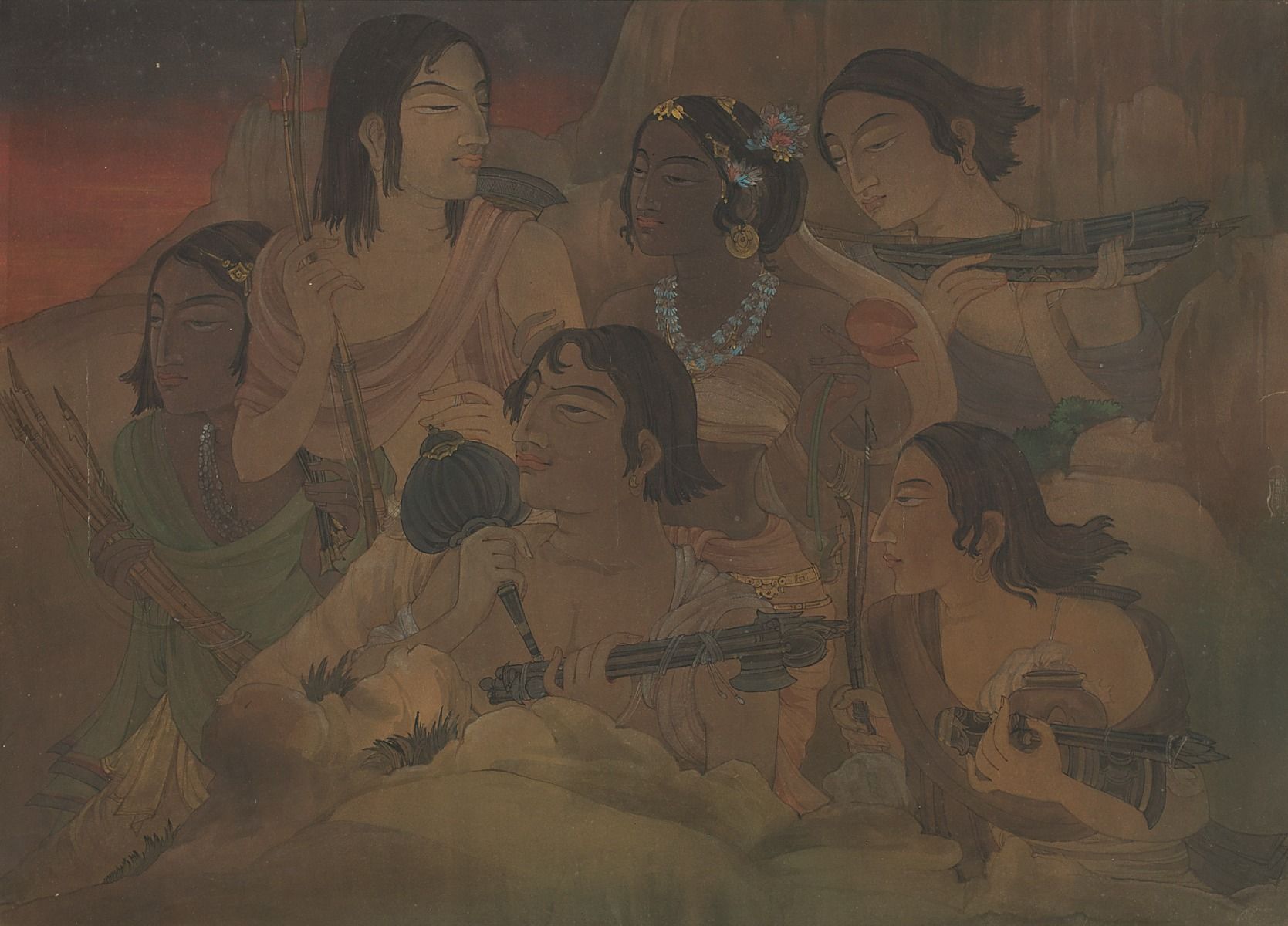
|
Ramgopal Vijaivargiya, Untitled (Draupadi and the Five Pandavas), c. 1930s, Watercolour wash and gold paint on paper, 20.5 x 27.0 in. Collection: DAG |
Bose suggests the use of Whatman paper or other foreign-made handmade paper or even Chinese, Japanese, or Indian made paper of strong stock, but argues that out of these, Whatman paper can endure the greatest number of washes. He writes that Abanindranath preferred the use of materials which are typically used in transparent water-colour painting—pigments such as indigo, chrome yellow, mauve and carmine. Indian red, ochre and terra verde are considered too heavy and opaque for wash and therefore only used to detail objects in the foreground of the image.
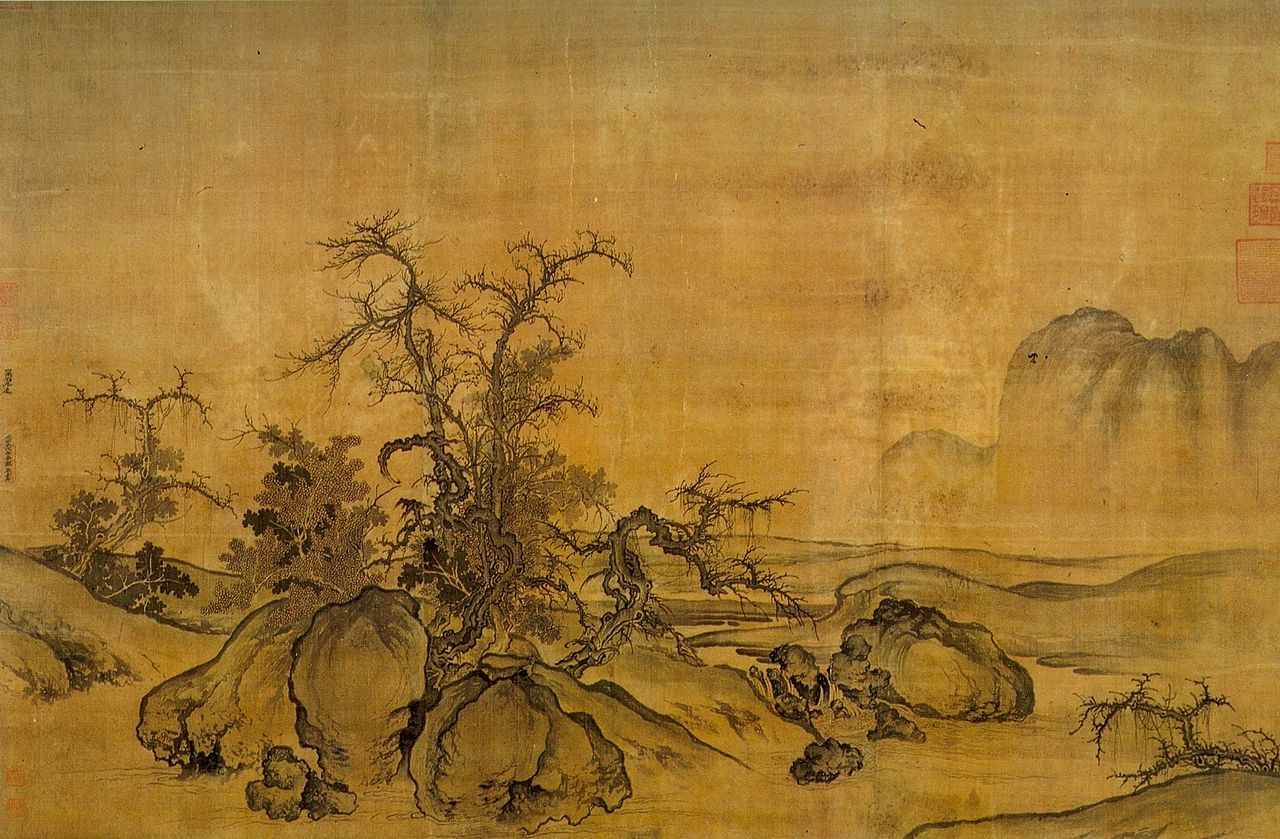
Guo Xi, Ping Yuan Tu, 1078, ink and light colour on silk, China. Image Courtesy: Wikimedia Commons
Earliest examples of such paintings, mainly done in water-based ink, are attributed to Tang dynasty artists in China. Wash paintings in monochromatic inks flourished in the tenth to thirteenth century Song dynasty. The emphasis on encapsulating the spirit through the wash technique as opposed to achieving a realism in painting was closely associated with principles of Zen Buddhism which privileges simplicity over the sumptuous.

|
Kanō Masanobu, Landscape, Kyushu National Museum. Image courtesy: Wikimedia Commons |
In fifteenth century Japan, Kano Masanobu established the Kano school of painting which is perhaps the most influential school of painting in the history of Japanese art. Masanobu had deep connections to Zen temples, despite not being a practitioner himself, and adopted aspects of Chinese painting which were preferred by Zen Buddhists for its spiritual character. Early Kano school works show a similar affinity to the wash technique and a predominance of strong brushwork with little to no pigments. However, successors of Masanobu took the Kano school in more opulent and sumptuous directions that aligned with the aesthetic sensibilities of the warlords during the Momoyama period—expanding into the usage of multiple pigments and even gold foil. We see an enduring penchant for the wash technique almost throughout, and especially in the later resurgence of the simplicity and austerity in the works of Kano Tan’yu in the seventeenth century during the Tokugawa Shogunate.
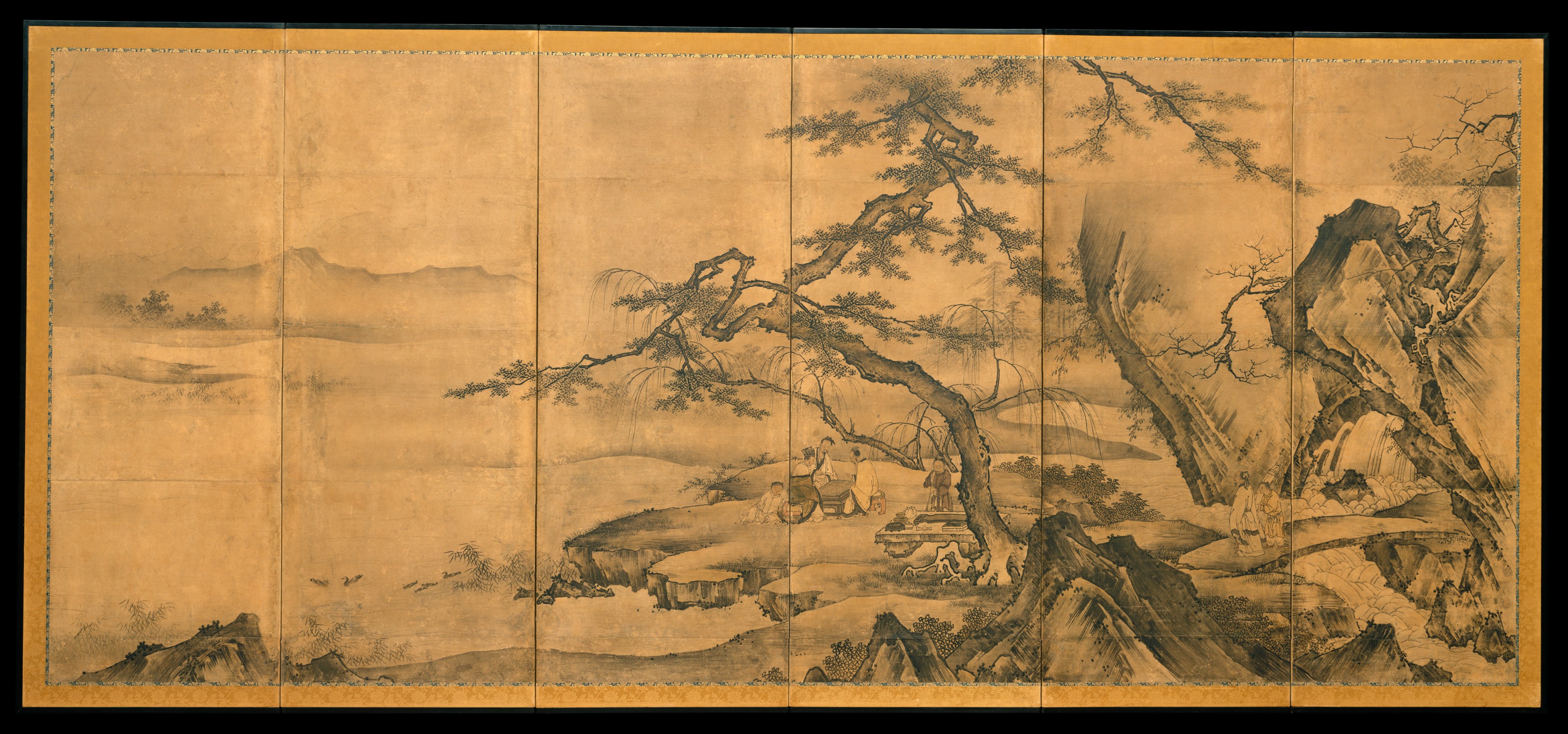
Kano Motonobu, The Four Accomplishments, mid-16th century, Pair of six-panel folding screens; ink and color on paper, 67 in. × 12 ft. 6 in. Image courtesy: MET Museum (Public Domain)
During the Meiji era in Japan, as a response to the introduction of Western techniques of oil paintings, the term nihonga began to be used for all works done in traditional painting techniques including the wash. Nihonga simply translates to Japanese painting but also encapsulates the nuances of a quest for national identity in art. This response was similar to India, where many of the Japanese artists travelled.
As a philosophical and artistic movement, nihonga’s origins can be traced back to a desire to revive the use of traditional materials and techniques in art in response to the pedagogic surge of western techniques during the Meiji era led by philosophers and pedagogues Ernest Fenollosa and his associate Okakura Tenshin. Later artists of the Kano school, especially Hashimoto Gaho and Kano Hogai, led the aesthetic movement where they gave direction to the visual identity of nihonga. Okakura was the Director of the Imperial Art School in Ueno, Tokyo but broke away from it along with thirty-nine other Japanese artists due to discontent over the European academic structure of art education. They formed an alternative school—the Nippon Bijutsuin.

Yokoyama Taikan, Night at South Sea, 1944. Color on paper, 81x90 cm. Image courtesy: Wikimedia Commons
Okakura’s ideas of Pan-asianism and a nationalist artistic revival was incredibly well received in India during his trip in 1902-03. Sister Nivedita (Margaret Noble), herself a significant figure in the nationalist movement, introduced him to the Tagore household where he found a space for fruitful cultural and political exchanges. He was soon followed by his students Hishida Shunso and Yokoyama Taikan, who, trained by Hashimoto Gaho, were some of the foremost painters of nihonga. They introduced the wash technique as practiced by the nihonga artists, much evolved from the time of Kano Masanobu and yet deeply significant, to the Tagore brothers Abanindranath and Gaganendranath. Abanindranath recalls being taught by and practicing with Taikan, who was a master of deep tonal washes and lines that flowed with the grace of extraordinary control, in his memoirs Jorashankor dhare (Around Jorasanko). Although he experimented with brushwork in Chinese ink, it is the soft colouristic effects of classical Kano paintings which left a lasting impression on his visual language. For Abanindranath colour became the main tool of expression, but, as art-historian Tapati Guha-Thakurta writes, it was ‘colour almost divested of itself’.
For Abanindranath and later his students, wash was a way to functionalise form to convey emotions and atmosphere. As Nandalal writes in Vision & Creation, ‘the purpose of wash is to lay colour in the background and the spaces in between, to soften the already laid colours and invoke a special feeling of atmosphere, of morning, evening, or night’. Although initially deriving from Japanese artists, Abanindranath’s own innovations with the wash technique created a visual idiom so characteristic that his student begins his essay on wash painting by referencing the synonymity of his style with his innovations in this technique. On the other hand, the Japanese artists in Kolkata—Taikan, Shunso, and later Katsuta Shokin—all deploy the wash technique in their own paintings on Indian themes incorporating other formal influences from Indian painting traditions such as miniatures. This collapsing of national boundaries in a mutual development of a new aesthetics and art style was arguably organised around the ‘wash’.

The wash technique in this period, especially as deployed by artists of the Bengal school, is also central to the artistic language that develops in response to and against the western academism in modern Indian art; a phenomenon finding cultural resonance in nihonga. Abanindranath’s usage of wash to diffuse details to collapse time and space in a way that leaves behind only a ‘mood’—an imagined zone of ambivalence—resisted academic narrativism. This privileging of emotion over representation is well aligned with Okakura’s imposition of a subtle hierarchy between the Confucian and Zen Buddhist ideals of art where the former tended toward symmetry and decoration whereas the latter emphasised ‘the expression of commanding ideals’, as Guha-Thakurta writes. This hierarchy can be traced all the way back to the beginnings of the Kano school and seems to be a commonality in the form achieved by the wash technique throughout its trajectory.

|
Nandalal Bose, Untitled (Sati), Graphite on paper. Collection: DAG
|
It is using the wash technique that Abanindranath painted his most well-known work of nationalist art amidst the nascent Swadeshi agitation in Bengal. Initially conceived of as the Banga Mata (Mother Bengal), he paints the Bharat Mata as a young female ascetic, standing barefoot, holding in each arm the symbol for food, clothing, shelter, and spirituality. The painting has a timeless quality to it—the application of wash induces a surreal quality to the picture, with the halo softly encircling her head and her feet almost floating upon light. In his essay, Nandalal astutely points out that one cannot use white to highlight or depict brightness in wash paintings. The white dries out to a harsh tone that looks like a lime-wash. To highlight or produce areas of brightness in wash paintings, one must leave those spaces devoid of colour from the beginning. Anywhere there is a need for lightness, the lightest of washes applied carefully and calculatingly will produce the desired effect. In Bharat Mata, it is the absence that creates the lightness—the affect a testament to the efficacy of the skill of the technique. It also encapsulates the aesthetic and political journey of the wash technique in that it goes onto become, at the time, the epitome of nationalist art.
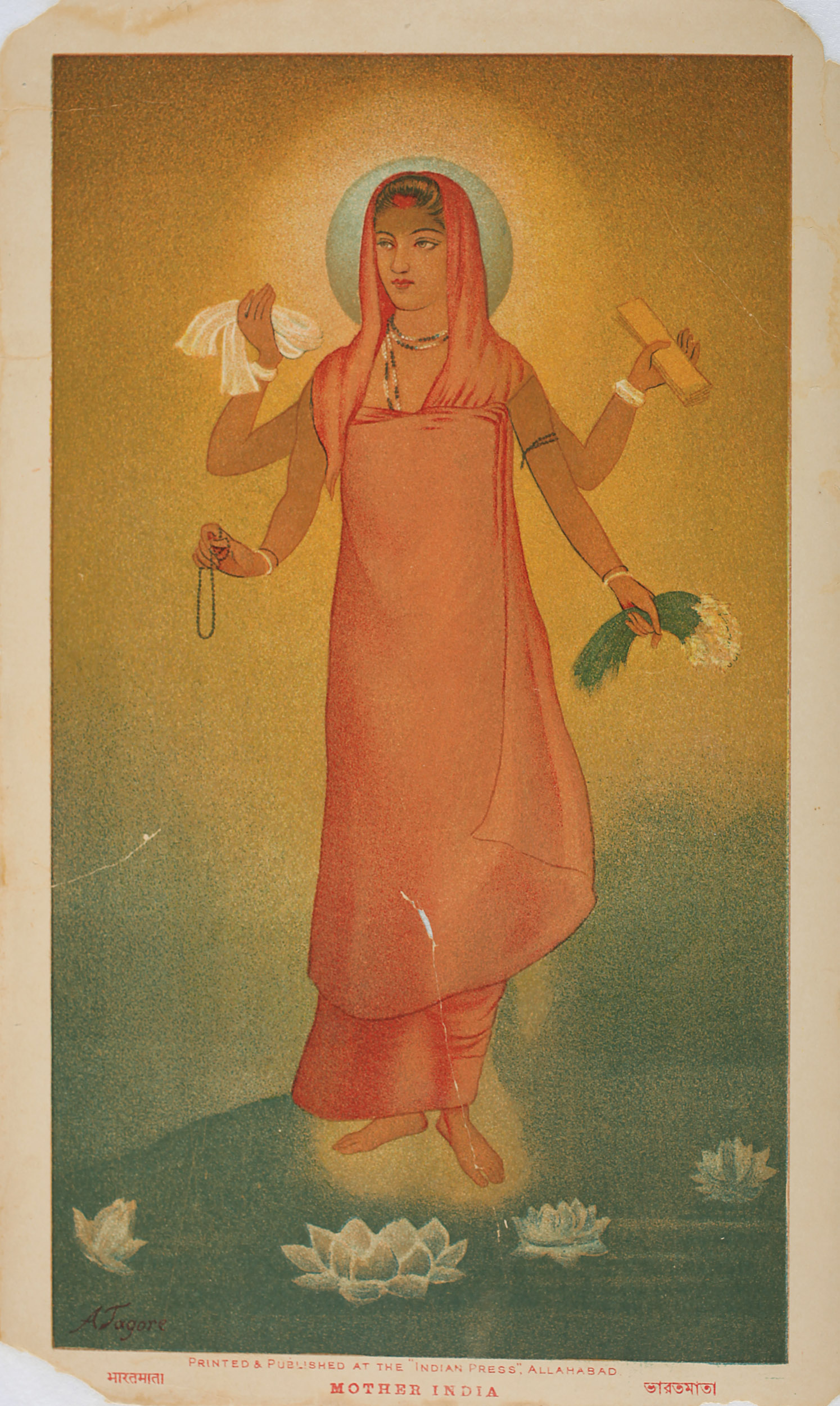
|
Abanindranath Tagore, Bharat Mata, Chromolithograph on
paper. Collection: DAG
|
Students and successive artists of the Bengal school and beyond continued their experiments with the wash technique and went on to produce some of the most timeless paintings in Indian art history which to this date are considered masterpieces—a testament to the historical significance of this centuries-old technique.

|
M. A. R. Chughtai, Tulsidas Ganga Snan ko Brahma Muhurt mein ja rahe, Watercolour wash and gouache on paper, 15.0 X 9.7 in. Collection: DAG |

|
Abanindranath Tagore, Acharya Nandi Sapthoham, 1909, Watercolour wash on paper, 5.0 X 3.2 in. Collection: DAG |
References
Nandalal Bose, Drishti o Srishti (Vision & Creation)
Tapati Guha-Thakurta, The Making of a New ‘Indian' Art
Ellen P. Conant ed., Nihonga: Transcending the Past
Department of Asian Art, Kano School of Painting, Heilbrunn Timeline of Art History, The Metropolitan Museum


